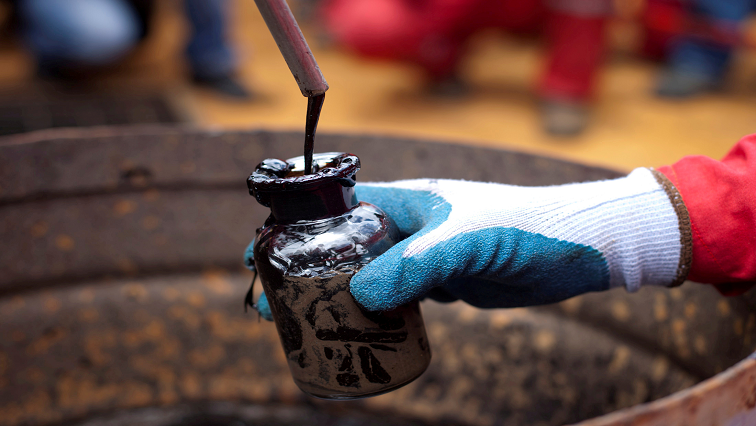Oil and other commodities prices soared while shares sank in frantic trading on Monday as the risk of the US and European ban on Russian crude imports threatened stretched supply chains and heaped further inflationary pressure on economies worldwide.
The euro extended its slide, hitting parity against the safe-haven Swiss franc, on rising fears of a stagflationary shock that might lead the European Central Bank to maintain its ultra-easy policy.
Eurozone inflation-linked government bond yields fell sharply, with that of Germany’s 10-year linker down 10 basis points to a record low of – 2.453%, as inflation expectations surged.
Gold prices hit $2,000 for the first time in 1-1/2 years, with investors rushing to the safe-haven metal while palladium hit an all-time high, as the Russia-Ukraine crisis continued and Western governments considered further sanctions.
“If the West cuts off most of Russia’s energy exports it would be a major shock to global markets,” said BofA chief economist Ethan Harris.
Russia calls the campaign it launched on February 24 a “special military operation”, saying it has no plans to occupy Ukraine.
Having surged 18% in wild early action, Brent was last quoted 6.25% higher on the day at $125.44, while US crude rose $7.19 to $122.78.
That jump which follows a 21% surge in Brent crude last week will be costly for consumers and leave them with less money to spend on other things, a threat to global economic growth.
Worries about growth saw S&P 500 stock futures drop 1.75%, while Nasdaq futures shed 1.7%. US 10-year bond yields also dropped to their lowest since early January.
Europe’s benchmark STOXX index fell 2.55% to a one-year low, as Germany’s DAX looked set to confirm a bear market after suffering a 20% decline since its January high.
Asian markets earlier set the tone for a grim day inequities. Japan’s Nikkei sank 3.4% to a 15-month low, while MSCI’s broadest index of Asia-Pacific shares outside Japan lost 2.77%. Chinese blue chips shed 3.19%.
Hikes in doubt
BofA’s Harris estimates the loss of Russia’s 5 million barrels could see crude prices double to $200 a barrel.
It is not just oil, with commodity prices having their strongest start to any year since 1915. London nickel prices soared as much as 30.7%, their biggest daily percentage gain on record, as supply disruption fears gripped markets.
That will only add to the global trend towards higher inflation. Data this week is expected to show annual US consumer price growth at a stratospheric 7.9%, and the core measure at 6.4%.
The Russia-Ukraine conflict also weighed on talks aimed at reviving Iran’s nuclear deal with major powers, after Tehranaccused Russia of “interference”.
All of which complicates the policy picture for the European Central Bank when it meets this week, as the soaring cost of oil threatened an economic condition known as stagflation, where prices soar even as growth flatlines.
Given the potential for stagflation is very real, the ECB is likely to maintain maximum flexibility with its asset purchase programme at 20 billion euros through Q2 and potentially beyond, thus effectively pushing out the timing of rate hikes,” said Tapas Strickland, an economist at NAB.
Euro overwhelmed
With the outlook for European growth darkening, the single currency took a further beating down to $1.0829 and was in danger of testing its 2020 trough around $1.0635.
The euro also tumbled against the Swiss franc, breaking under 1.0000 for the first time since early 2015.
That prompted a rare verbal intervention by the Swiss central bank, which repeated its pledge to intervene in the currency markets to curb franc strength if necessary.
The dollar was firmer, supported in part by a strong payroll report that only reaffirmed market expectations for a Fed hike this month. The dollar index was last at 99.253 having climbed 2.3% last week.
“Events in Ukraine are increasingly overwhelming the euro,” said Richard Franulovich, head of FX strategy at Westpac.
“With safe-haven flows likely to continue for some time yet and Fed officials eager to press on with their policy normalisation plans, 100+ for (the dollar index) is just a matter of time.”






